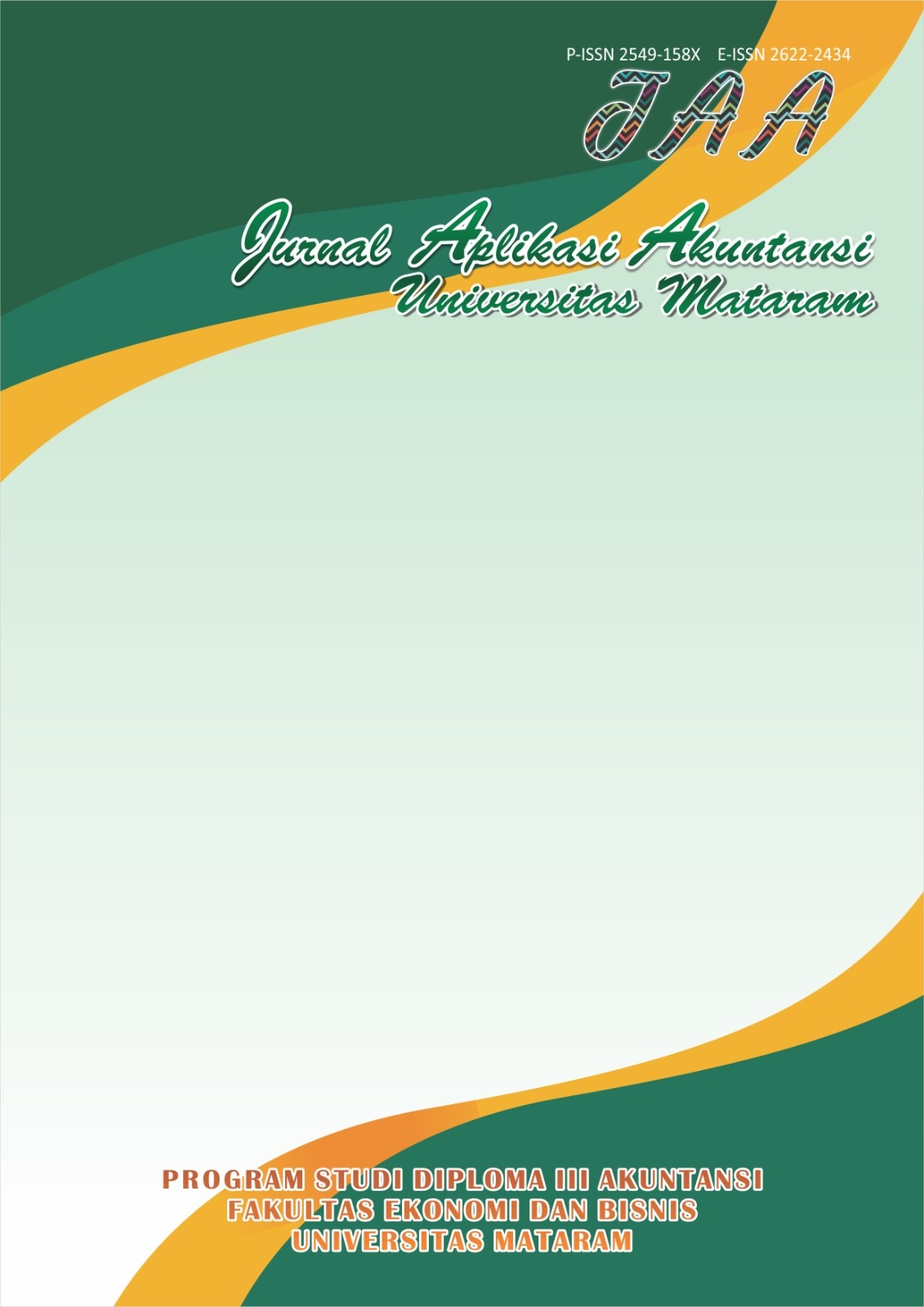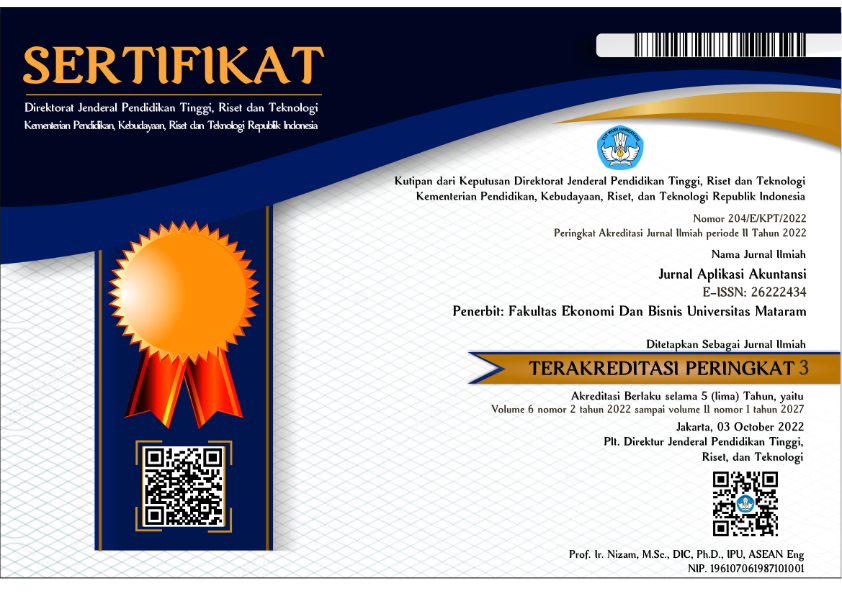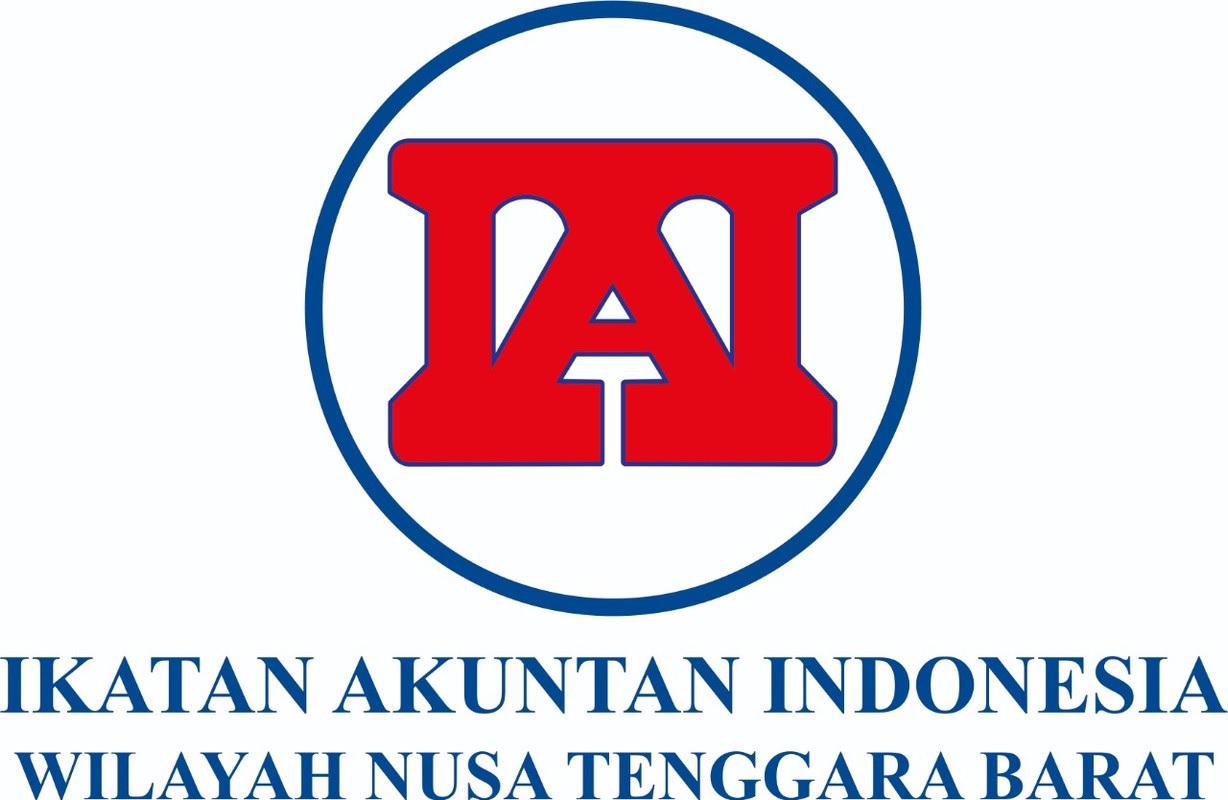MENGUKUR INKLUSI KEUANGAN DIGITAL PADA UMKM DENGAN MODIFIKASI MOBILE TECHNOLOGY ACCEPTANCE MODEL
DOI:
https://doi.org/10.29303/jaa.v9i2.579Keywords:
Payment Gateway, Inklusi Keuangan Digital, Mobile usefulness, Mobile Ease of Use, Behavioral IntentionAbstract
The Micro, Small, and Medium Enterprises (MSMEs) have demonstrated resilience and played a crucial role in saving Indonesia's economy during significant crises, such as the Covid-19 pandemic. Technology, especially in finance, can drive digital financial inclusion for MSMEs despite challenges. This study assesses digital financial inclusion in MSMEs through Payment Gateway, applying a modified Mobile Technology Acceptance Model (MTAM). Using purposive sampling, 100 MSME operators were surveyed, and data was analyzed with PLS-SEM. The findings highlight service usefulness, ease of use, intention, cost, and usage intensity significantly affecting Payment Gateway adoption in Denpasar's MSMEs. The study's implications suggest that MTAM offers valuable insights into the factors influencing Payment Gateway adoption, providing a basis for government and financial institutions to design programs supporting digital payment adoption and enhancing financial inclusion within MSMEs.
References
Aksari, F., 1, A., & Sulistyono, S. W. (2022). Issue 3 (2022) Pages 561-568 INOVASI: Jurnal Ekonomi. Keuangan Dan Manajemen, 18(3), 561. https://doi.org/10.29264/jinv.v18i3.10954
Ashoer, M., Jebarajakirthy, C., Lim, X. J., Mas’ud, M., & Sahabuddin, Z. A. (2024). Mobile fintech, digital financial inclusion, and gender gap at the bottom of the pyramid: An extension of Mobile Technology Acceptance Model. Procedia Computer Science, 234, 1253–1260. https://doi.org/10.1016/j.procs.2024.03.122
Budiman, J., & Herkulana, H. (2021). Peran Umkm Dalam Penyerapan Tenaga Kerja Di Kota Pontianak. Jurnal Ekonomi Integra, 11(2), 91–98.
Davis, F. D. (1989). Perceived usefulness, perceived ease of use, and user acceptance of information technology. MIS Quarterly: Management Information Systems, 13(3), 319–339. https://doi.org/10.2307/249008
Dhobe, S. D., Tighare, K. K., & Dake, S. S. (2020). A review on prevention of fraud in electronic Payment Gateway using secret code. Int. J. Res. Eng. Sci. Manag, 3(1), 602–606.
Fian, A., Sokibi, P., & Magdalena, L. (2020). Penerapan Payment Gateway pada Aplikasi Marketplace Waroeng Mahasiswa Menggunakan Midtrans. Jurnal Informatika Universitas Pamulang, 5(3), 387. https://doi.org/10.32493/informatika.v5i3.6719
Herowati, E. (2024). The Effect of Implementing the Technology Acceptance Model (Tam) on Shopping Intention (Behavioral Intention) Using Paylater. Indonesian Journal of Interdisciplinary Research in Science and Technology, 2(1), 1–20. https://doi.org/10.55927/marcopolo.v2i1.7891
Hikmatul Khoiroh, L., Wulandari Pangestuty, F., hikmatul Khoiroh, L., Ekonomi dan Bisnis, F., Hikmatul Khoiroh Ekonomi, L., dan Perbankan, K., dan Bisnis, E., Brawijaya, U., & Farah Wulandari Pangestuty, I. (2022). Penulis Korespondensi Penerapan Mobile Technology Acceptance Model (MTAM) Dalam Menggunakan Qris Sebagai Sistem. Contemporary Studies In Economic, 1. https://doi.org/10.21776/csefb.2022.01.2.08
Ilyas, R., & Hartono, R. (2023). Digitalisasi UMKM dan pertumbuhan ekonomi. Shiddiq Press.
Kumar, R., Singh, R., Kumar, K., Khan, S., & Corvello, V. (2023). How Does Perceived Risk and Trust Affect Mobile Banking Adoption? Empirical Evidence from India. Sustainability (Switzerland), 15(5). https://doi.org/10.3390/su15054053
Lew, S., Tan, G. W.-H., Loh, X.-M., Hew, J.-J., & Ooi, K.-B. (2020). The disruptive mobile wallet in the hospitality industry: An extended Mobile Technology Acceptance Model. Technology in Society, 63, 101430.
Lui, T. K., Zainuldin, M. H., Yii, K.-J., Lau, L.-S., & Go, Y.-H. (2021). Consumer Adoption of Alipay in Malaysia: The Mediation Effect of Perceived Ease of Use and Perceived Usefulness. Pertanika Journal of Social Sciences & Humanities, 29(1).
Lutfi, A., Al-Okaily, M., Alshirah, M. H., Alshira'h, A. F., Abutaber, T. A., & Almarashdah, M. A. (2021). Digital financial inclusion sustainability in Jordanian context. Sustainability (Switzerland), 13(11). https://doi.org/10.3390/su13116312
Mavilinda, H. F., Nazaruddin, A., Nofiawaty, N., Siregar, L. D., Andriana, I., & Thamrin, K. M. H. (2021). Menjadi “UMKM Unggul” Melalui Optimalisasi Strategi Pemasaran Digital dalam Menghadapi Tantangan Bisnis di Era New Normal. Sricommerce: Journal of Sriwijaya Community Services, 2(1), 17–28.
Muharam, H., Gursida, H., Hurdawaty, R., Asmana, Y., Hammad, H., & Suyatno, E. (2023). Sosialisasi Akses Permodalan Di UMKM Tajur Halang Makmur Kabupaten Bogor Jawa Barat. Al-Ijtimā: Jurnal Pengabdian Kepada Masyarakat, 4(1), 188–196.
Nursansiwi, D. A., & Armiani, A. (2022). Peran Strategi Bisnis Fintech Payment Gateway dalam Meningkatkan Kinerja UMKM di NTB. Owner, 7(1), 367–378. https://doi.org/10.33395/owner.v7i1.1219
Prajanto, A., & Pratiwi, R. D. (2019). Revolusi Industri 4.0: Desain Perkembangan Transaksi dan Sistem Akuntansi Keuangan. Jurnal Ilmu Manajemen Dan Akuntansi Terapan (Jimat), 10(1), 86–96.
Ramadhan, F. (2021). Peran Fintech Dalam Meningkatkan Inklusi Keuangan Syariah Pada Umkm Di Kota Makassar. Madinah: Jurnal Studi Islam, 8(2), 247–259.
Ramírez-Correa, P., Rondán-Cataluña, F. J., Arenas-Gaitán, J., & Martín-Velicia, F. (2019). Analyzing the acceptation of online games in mobile devices: An application of UTAUT2. Journal of Retailing and Consumer Services, 50, 85–93.
Rudiyanto, R. (2022). Akses Permodalan UMKM ke Perbankan.
Santoso, B., & Zusrony, E. (2020). Analisis Persepsi Pengguna Aplikasi Payment Berbasis Fintech Menggunakan Technology Acceptance Model (Tam). Jurnal Teknologi Informasi Dan Komunikasi, 11(1), 49–54.
Setiawan, J. J. (2020). Pengaruh perceived usefulness, perceived ease of use, subjective norm, dan customer experience terhadap intention to use Mytelkomsel (studi kasus pada mahasiswa Universitas Kristen Petra Surabaya). Jurnal Strategi Pemasaran, 7(1), 12.
Setyawati, R. E. (2020). Pengaruh Perceived Usefulness, Perceived Ease of Use Terhadap Behavioral Intention To Use dengan Atittude Towards Using sebagai Variabel Intervening (Studi Kasus Pada Gopay Di Kota Yogyakarta). Jurnal Ekobis Dewantara, 3(1), 39–51.
Shafly, N. A. (2020). Penerapan model utaut2 untuk menjelaskan behavioral intention dan use behavior penggunaan mobile banking di kota malang. Jurnal Ilmiah Mahasiswa FEB, 8(2).
Stal, J., & Paliwoda-Pękosz, G. (2019). Mobile Technology Acceptance Model: An empirical study on users' acceptance and usage of mobile technology for knowledge providing. Information Systems: 15th European, Mediterranean, and Middle Eastern Conference, EMCIS 2018, Limassol, Cyprus, October 4-5, 2018, Proceedings 15, 547–559.
Tan, E., Kusumah, D. H., & Damanik, A. (2021). Impresi e-Payment dan Niat Berperilaku Baru Bagi Pemanfaatan Inklusi Keuangan Digital UMK. Jurnal Pengembangan Wiraswasta, 23(3), 163. https://doi.org/10.33370/jpw.v23i3.643
Tew, H.-T., Tan, G. W.-H., Loh, X.-M., Lee, V.-H., Lim, W.-L., & Ooi, K.-B. (2022). Tapping the next purchase: embracing the wave of mobile Payment. Journal of Computer Information Systems, 62(3), 527–535.
Tony Sitinjak, M. M. (2019). Pengaruh persepsi kebermanfaatan dan persepsi kemudahan penggunaan terhadap minat penggunaan layanan pembayaran digital Go-Pay. Jurnal Manajemen, 8(2).
Utami, R., Yani Amril, D., Jundrio, H., Pemasaran Internasional, M., & Tempo, P. (2022). Pengaruh Perceived Usefulness, Perceived Ease Of Use, Dan Time Saving Terhadap Continuous Usage Intention Dengan Attitude Towards Mobile Apps Sebagai Variabel Mediasi Pada Aplikasi Simpool Di Masa Pandemi Covid 19. https://doi.org/10.56881/masarin.v1i1.125
Windiarti, S., & Pratama, A. (2022). The Effect Of Shopeepay-Based Marketing And Payment Gateway Strategies On Financial Inclusion Of Shopee Application Users In Dki Jakarta. Journal Of Management, Accounting, General Finance And International Economic Issues, 2(1), 17–28.
Yan, L. Y., Tan, G. W. H., Loh, X. M., Hew, J. J., & Ooi, K. B. (2021). QR code and mobile Payment: The disruptive forces in retail. Journal of Retailing and Consumer Services, 58. https://doi.org/10.1016/j.jretconser.2020.102300
Yuan, Y.-P., Tan, G. W.-H., Ooi, K.-B., & Lim, W.-L. (2021). Can COVID-19 pandemic influence experience response in mobile learning? Telematics and Informatics, 64, 101676.
Downloads
Published
How to Cite
Issue
Section
License
Copyright (c) 2025 Gusi Putu Lestara Permana, Ni Kadek Arisya Putri

This work is licensed under a Creative Commons Attribution-NonCommercial-ShareAlike 4.0 International License.









